ron-t kayaking blog
22 May 2013 .............. Cemaes to Wylfa Head
I went up to Cemaes for a first trip in my new boat, which is a Rockpool Isel. The trip was not quite what I expected.
There were breakers on the beach, but not particularily large, and it was little problem heading out through them, then through the incoming swell of say about 600mm`s.
But the further out I went the bigger it got - by the time I was out of the immediate confines of the bay the swell was up to 1.5 metres or so, and I wasn`t too sure what to do. I really wanted to head out the beach round from Wylfa Head, which I knew would be sheltered, to do some rolling and self rescues in the Isel.
I knew from my trip out in another Isel a few months ago that the Isel is a good boat for re-entry and roll-up self rescues - that`s one of the main reasons that I now have one.
So I carried on somewhat cautiously, and eventually made it out to Porth yr Ogof, where it was quite sheltered, and started to play about with self rescues and rolling.
Now as I said, I knew the Isel is a good boat for re-entry and roll-up self rescues, what I didn`t fully appreciate before is what a peach of a boat the Isel is for rolling.
I soon found out that I could do a re-entry and roll-up self rescue on both sides - which is something I have never ever been able to do before.
I could do normal screw rolls on both sides, reverse screw rolls on both sides, and even roll on both sides by laying the paddle on the surface of the water, and just flicking up using that, almost like a hand roll.
And I could all these with both the spray deck on, and with the spray deck off, so the boat had water in it.
If you are having difficulty with rolling, try an Isel - they are magic !
One of the characteristics of the Isel is that - like the Avocet RM - when they are upside down, they don`t actually lie upside down, they lie at an angle - I think this is a result of having a large rocker in the deck.
This makes them very easy for re-entry and roll-up self rescues, because the boat is lying at an angle, not upside down.
The downside is that it is harder to do a 360 degree roll - 180 degree rolls are easy - ie, coming up the same side on which you went over. But I couldn`t ever get the boat to flip from one side to the other side when it was upside down.
It could well be that I`m not flexible enough to get sufficient bouyancy shifted across.
It could also be because my bouyancy aid is well past its prime, and it is absorbing water if submerged for any length of time.
I`ll experiment more with this, but it could mean that if you want to be able to roll when it matters, you will have to be able to roll well on both sides. Being able to roll on both sides is a good skill set to have anyway - I believe that it is encouraged now in the coaching scheme, and in sports coaching in general - I think that "Bi-lateral Transfer" is the techie phrase - ie, learning to do things on both sides of the body.
Actually, to be more accurate, bi-lateral transfer is not just about learning to do things on both sides of the body, it refers to the concept that it is easier to learn a skill on one side of the body if the skill can already be done on the other side of the body, than it is to learn a new skill that hasn`t already been learnt on the other side of the body. So bi-lateral transfer is about skill transfer from one side of the body to the other. But the net result is that you can perform the skill on both sides of the body.
Scouting around on the web, it looks like greenland rolling competitions require rolling on both sides, and are done without bouyancy aids.
Sounds like I should play some more with this.
Anyway - enough rolling - time for a tea break sitting in the sunshine. This is the view from the beach looking out towards Llanbadrig head, and the first of the un-named headlands heading out towards Dinas Gynfor.
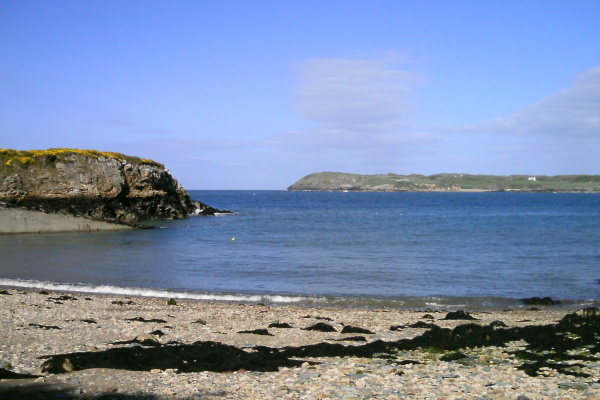
A bit further round and you see somewhat towards Wylfa Head
In the foreground you can see a concrete ramp - this is all that is left of a former lifeboat station that was situated in the shelter of a large rocky lump called Ynys yr Wyn. Cemaes lifeboat was based there from 1907 to 1932. The Charles Henry Ashley was a 38 foot Watson lifeboat powered by sail and/or by 12 oarsman.
After 60 odd years in private ownership whilst it slowly rotted away, it has now been restored, and is afloat again. It is used as a sailing vessel, and is moored in Cemaes harbour close to the pier.
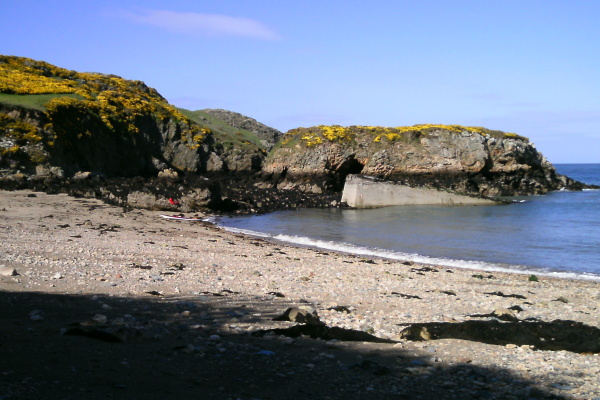
After heading off, this is looking back at Porth yr Ogof.
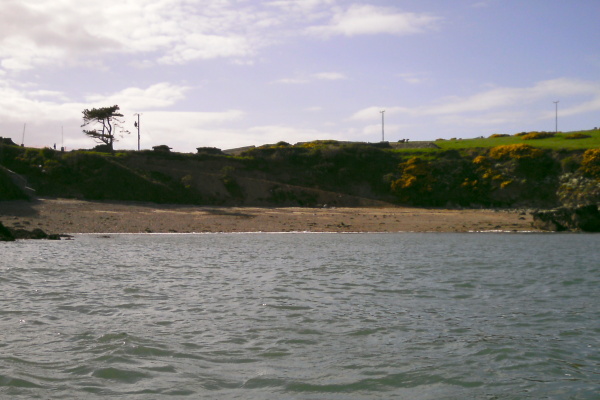
Looking down the coast towards Cemaes.
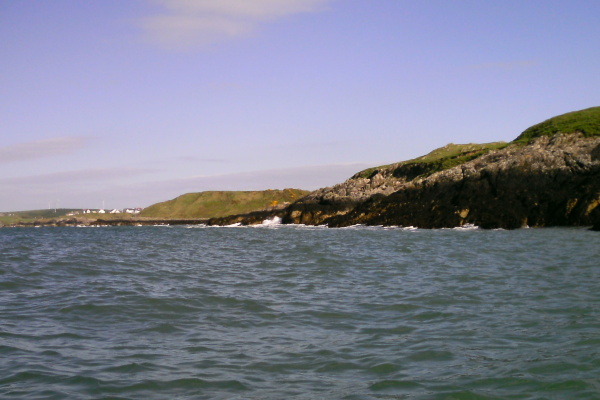
And finally looking out towards Middle Mouse.
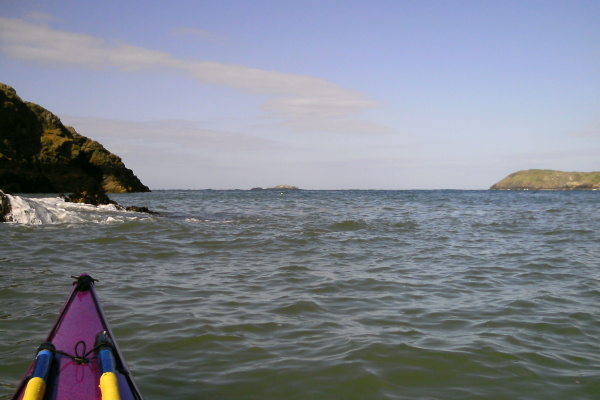
That`s the end of the pictures, because I was then back out into the full force of the swell coming in - I think at times it was well over 2 metres, and broadside on the whole way back to Cemaes.
The sea got more lumpy around the last point before Cemaes beach, then quietened down as I headed in - at the beach it was almost flat.
If I had known what the sea was going to be like out in the middle, I would not have gone. It was certainly the biggest sea I have ever been in. In my favour was the fact that much of it was rather lumpy swell, not just wind driven waves, so they were seldom breaking - but they were large and somewhat lumpy from the wind.
But it was an interesting experience, and having a boat in which I know I can reliably do a quick self rescue is a big confidence booster.
I think I like the Isel !